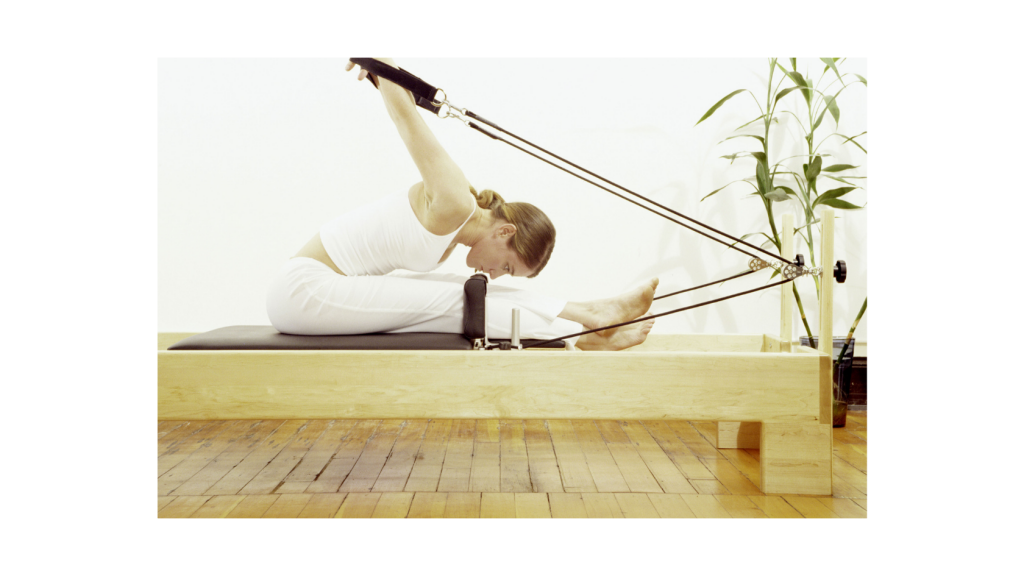
What is Pilates?
Pilates is a method of exercise promoting muscle strength, efficiency and flexibility. It’s widely used in physical training and rehabilitation. There are two main streams: standard Pilates and Clinical Pilates. Standard Pilates is for general conditioning, with non-injured patients taught by instructors.
Clinical Pilates is where appropriately trained physiotherapists incorporate specific exercises in a treatment process to match a patient’s condition.
What’s the difference between Standard Pilates and Clinical Pilates?
Standard Pilates can help correct posture, improve functional movement and with regular practice, your muscles will become lengthened, toned and lean. Pilates exercise draws particularly on the abdominal (core) muscles using specially designed, spring loaded equipment, such as Reformers,
Cadillac or Trap (Trapeze) tables, Wunda chairs or on a mat.
Clinical Pilates incorporates all of the above principles, but also considers ‘neural drive’ and ‘directional preference’. Neural drive is how our brain and muscles communicate to enable good posture and functional movement. It works on improving coordination, balance, motor control and
efficiency of movement. This is done by completing a detailed assessment of your body, considering all past and present injuries. This helps to work out your bodies preferences for both movement direction and posture (directional preference). Then these preferences will be matched to an
individualised program for you. This involves a much more detailed assessment, ongoing re- assessment and typically, individual or very small group sessions. These are taken by a physiotherapist who is trained in Clinical Pilates.
Due to the fact that each person’s needs are different, someone with pain or injuries may be better suited to Clinical Pilates rather than a ‘one-size-fits-all’ standard Pilates class.
How effective is Pilates for injury treatment and rehabilitation?
Clinical Pilates is an effective form of exercise to assist in treatment and management of injuries. Many chronic injuries are due to muscle imbalances and mobility problems. These can place stress on the musculoskeletal system, creating or contributing to problems or pain, partly due to overuse or underuse of muscles. Pilates can help retrain muscles in chronic injury to address the underlying problems. The large variety of exercises in the Pilates repertoire can be broken into specific categories to
match a patient’s muscle imbalances or mobility problems very specifically, functionally and safely. Since there are a large variety of exercises to choose from in the Pilates repertoire, care must be taken to select the right exercises for the right person. Many musculoskeletal conditions are sensitive to movements in one direction or another; we are trained in Clinical Pilates can identify these sensitivities and build an individualised treatment program accordingly.
What conditions can Pilates can help improve?
Physiotherapy-based Clinical Pilates improves core (trunk) stability and efficiency, helping with back and neck pain, sporting injuries, musculoskeletal problems and general injuries. It also helps improve
sporting performance and posture to prevent falls and improve health issues such as heart disease, high blood pressure and cholesterol.
– Diabetes:
Pilates will add muscle mass, which will ensure your body makes better use of glucose. Your physiotherapist can tailor exercises for your type of diabetic condition to ensure the movements are safe for your health.
– Arthritis/surgery: If you suffer from arthritis, strength training should be included in your exercise program. Research shows that a combination of aerobic exercise and strength training can help control symptoms, maintain balance, keep joints flexible and help maintain an ideal body weight. Pilates strengthens the thigh muscles, which may help prevent arthritis, greater disability and knee injuries. Clinical Pilates can further examine whether surgery or conservative management is more appropriate in conditions such as joint replacements, arthroscopies and tendon/capsule repairs.
– Multiple sclerosis (MS): Studies have shown that Clinical Pilates exercises revealed moderate changes in levels of cognitive and physical performance, balance, depression and fatigue in MS patients.
– Neurological movement disorders, stroke, Parkinson’s, traumatic brain injury: We can tailor a program that will help address movement disorders commonly found in most neurological conditions.
– Incontinence: Pilates exercise programs have proven to be as effective as conventional pelvic floor muscle exercises (PFME) to speed up continence recovery after prostate surgery (prostatectomy). Pilates has also achieved a higher rate of fully continent patients.
What are the benefits of Pilates for pre and post natal women?
There are very few exercise programs that can be maintained safely throughout pregnancy, with Pilates becoming a very popular choice for expecting mothers. Close observation by your physiotherapist minimises risk, ensuring labour fitness.
How will Pilates improve recovery time after giving birth?
Since the abdominal muscles take quite a bit of a load during pregnancy, strong and efficient abdominal muscles will ensure your spine is supported during the all-important first months looking after your child. Pilates increases shoulder strength and stability, which is crucial for being able to
breastfeed comfortably and carry your baby. Some women will experience separation of the rectus abdominal muscles (rectus diastases) as a
result of pregnancy. This requires specific attention for a full recovery. Some prenatal strengthening programs can increase the risk of rectus diastases, so it is important that your program is tailored to
you to ensure minimal risk.
Can Pilates help with pelvic floor weakness after childbirth?
It is common after birth to experience pelvic floor weakness. You can have a real-time ultrasound for pelvic floor assessment, so that rehabilitation can be targeted to your needs and a program can be set up to improve strength. Incontinence is another common post natal problem. Since some
traditional Pilates exercises can place a lot of pressure on the pelvic floor, assessment with our women’s health physiotherapist can assist with pelvic floor examination and continence management. They can advise you when it is safe to return to Pilates classes.
